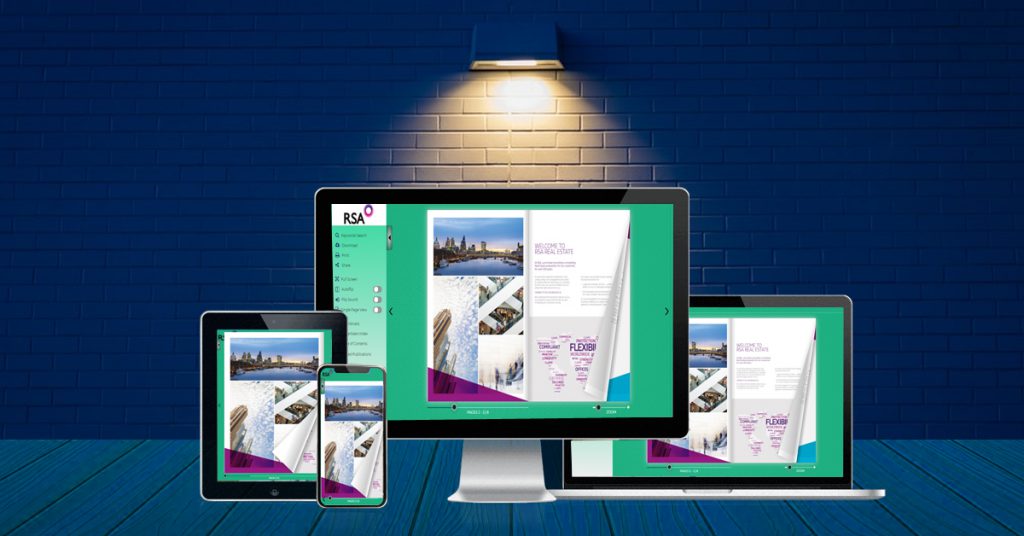Flipbook software: Unlocking the power of content analytics

The way we view and share content is revolutionized. With the move away from flat documents such as PDFs towards interactive, compelling formats such as flipbooks, new tools do not just present visual benefits but also offer advanced tools for assessing content performance. If you are producing and publishing digital brochures, catalogs, or presentations, flipbook software could be the hidden key to supercharging engagement and measuring your content’s success.
What is Flipbook Software?
Think about turning a bland, static PDF into a dynamic, interactive experience in which users can flip through pages, zoom into content, click on embedded links, and even view videos flawlessly integrated into the document. That’s exactly what flipbook software does.
Flipbook software transforms ordinary files, like PDFs, into digital flipbooks with the appearance and feel of an actual book or magazine. People can engage with such documents on any device, ranging from desktops to mobiles, making it a useful tool for businesses, teachers, marketers, and others.
Major Features of Flipbook Software:
- Interactive Elements: Insert videos, hyperlinks, quizzes, and pop-ups directly into your flipbook to enhance the content.
- Cross-Device Compatibility: Experience seamless performance on desktops, tablets, and smartphones for broad accessibility.
- Custom Branding Options: Most systems provide templates and branding features so you can align the design of the flipbook with your brand.
- No Need for Downloads: Flipbooks can be shared through a link, avoiding the inconvenience of downloading big files.
Flipbooks are also pleasing to the eye, yet their value lies far beyond appearance. Powerful flipbook software such as Enhanc flipbook software includes rich data analysis, providing companies with a greater understanding than ever before of how content fares.
Flipbook Software Provides Rich Analysis of Your Content
Whereas standard PDFs can only give you simple information like how many times the file was downloaded – flipbook software enables you to discover a treasure trove of information about your audience’s behavior. This analytics tool is a goldmine for anyone who wishes to know how well their content is engaging their audience.
Here’s how flipbook software’s in-depth analytics can revolutionize the way you do your content strategy:
-
Page-by-Page Tracking
Flipbook analytics are more than just surface-level metrics. You can monitor how long readers spend on each page, which will allow you to see which sections of your content capture attention and which might need work.
Why It Matters:
For marketing, this means gaining a clearer understanding of what resonates with your audience. For instance, if you’re using flipbooks to showcase a product catalog, analytics can reveal which products draw the most interest, guiding your future promotions.
Example:
Suppose a business employs a flipbook to showcase a new line of seasonal apparel. Analytics may indicate that the casual wear department gets the most hits, so they would modify their marketing strategy in response.
-
Engagement Metrics
Flipbook software enables you to view activity such as clicks, interactions with in-built videos, or reactions to call-to-action buttons. This is priceless when determining the success of interactive features.
Why It Matters:
In contrast to PDFs, which cannot be measured with a “click,” flipbooks provide you with concrete proof of reader interaction. You will know if that inlined shop link or tutorial video is leading to conversions.
Example:
A furniture retailer can include a “Buy Now” button in their product brochure. Flipbook metrics can measure the number of clicks on that button, allowing them to gauge its performance.
-
Retention Rates
Ever wonder how many individuals end up actually reading your content? Flipbook programs allow for retention measurement by monitoring where readers fall off.
Why It Matters:
Retention figures give you hints about content length, pacing, or formatting problems that cause readers to lose interest. With this information, you can revise to keep your readers engaged through to the last page.
Example:
An educational organization developing e-learning content detects a significant rate of drop-out near Slide 12 of its flipbook training. The developers recognize that the slide is riddled with excessively technical terms and opt to modify the wording for better retention.
-
Geolocation Insights
A few flipbook applications enable you to view the geography of your readers. This feature can enable firms to map out marketing efforts into geographical data.
Why It Matters:
For companies that have global audiences, geolocation insights provide unanticipated geographic areas of audience interest. This creates potential opportunities for expansion into a new market or local campaigns.
Example:
An international IT corporation finds their flipbook is doing incredibly well in Brazil. They may concentrate efforts on having their content translated into Portuguese to engage their readers further.
-
Device and Browser Usage
Analytics can also show the types of devices or browsers your audience uses to access your content.
Why It Matters:
This data ensures your flipbook performs optimally on commonly used platforms, preventing issues like poor resolution or incomplete functionality that might frustrate readers.
Example:
If most of your audience is reading your flipbook on mobile devices, you’d prioritize making elements mobile-friendly (for example larger fonts or easily clickable buttons).
-
Conversion Tracking
Ultimately, flipbook analytics can help track conversions – whether that’s signing up for a newsletter, downloading a resource, or making a purchase.
Why It Matters:
With conversion data, you’ll understand how your content aligns with your broader business goals, such as increasing sales, generating leads, or raising brand awareness.
Example:
A SaaS company employs a flipbook to describe its software’s advantage. In-built CTAs monitor free trials. Analytics show the high degree of association between video and sign-ups, guiding future content strategy to focus on multimedia.
-
A/B Testing Made Easy
Flipbook analytics enable you to compare various versions of the same content. Want to know if a product demonstration performs better with images or video? Flipbook platforms can compare the performance of each version.
Why It Matters:
A/B testing ensures your flipbooks are constantly optimized based on actual data, not guesses, so you can get the most out of them over time.
Example:
A non-profit tests two versions of their fundraising content. Analytics show that the version with a testimonial video generates 20% more donations than one with images only.
Final Words
Those days of producing static content and “hoping for the best” are gone. With flipbook software, companies can actually measure and optimize their content’s performance, providing more engaging materials to their audience while generating measurable results.
If you’re not yet leveraging the advanced analytics that come with flipbook software, it’s time to start. Being able to monitor page engagement, monitor conversions, and optimize design elements guarantees each flipbook you release provides measurable value to your overall campaign.
One top-recommended piece of software is Enhanc digital flipbook software. Start its 14-day free trial today!
